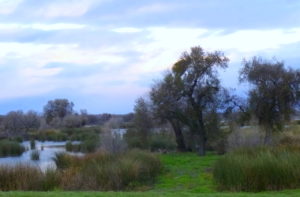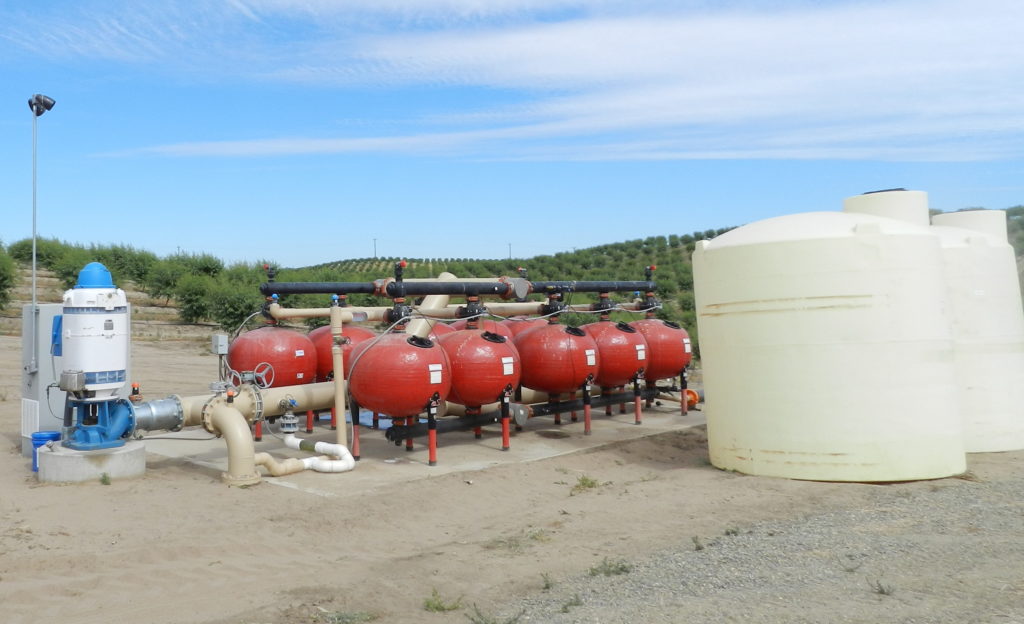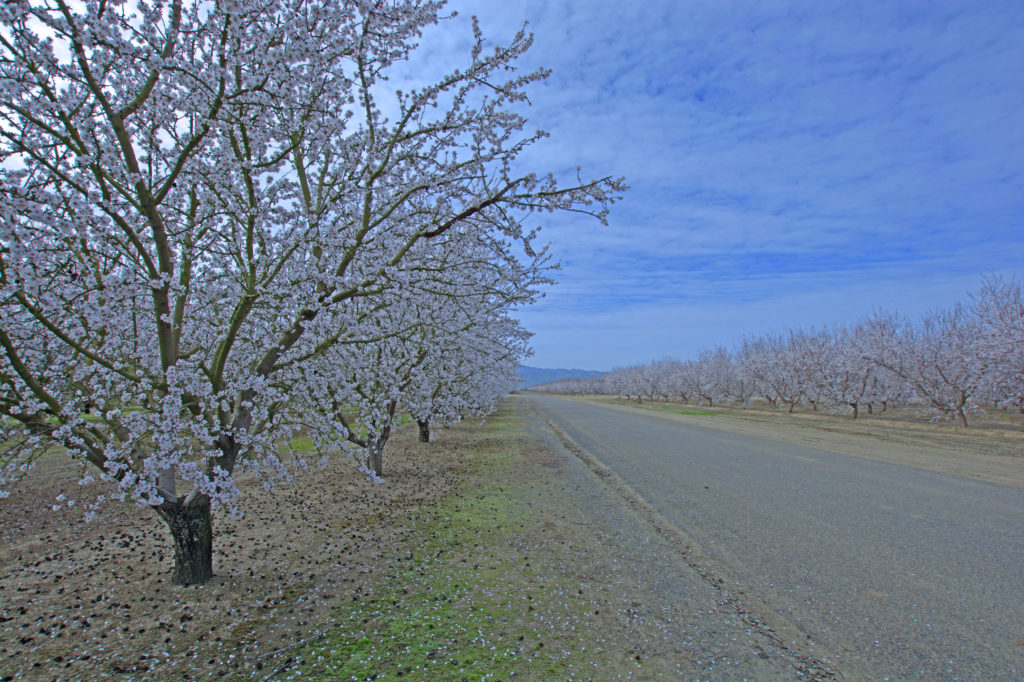
For the better part of thirty years, Modesto’s Vance Kennedy has been trying to tell people we don’t have enough water. Now in his mid-nineties, Kennedy is a retired hydrologist who received the highest possible service award from the Environmental Protection Agency when he was with the United States Geological Survey.
In an announcement bound to foment even more than the usual furor over water issues, the Public Policy Institute of California (PPIC) just gave an official seal of approval to Kennedy’s long-held claim. But the PPIC’s conclusion— that we need to retire at least 500,000 acres of farmland to balance our water needs—is bound to result in howls of outrage up and down the San Joaquin Valley.
Nonetheless, the evidence couldn’t be more obvious that we’ve gone beyond our limits in water consumption. First and foremost, consider groundwater. The new state requirement that we achieve sustainable groundwater basins by 2040 is ludicrous on its face. The only groundwater basin in the entire San Joaquin Valley that isn’t critically overdrafted is in Stanislaus County, and that aquifer has been in steady decline ever since the county’s eastern foothills were planted in thousands of acres of almond orchards.
The PPIC is absolutely correct that we need to fallow hundreds of thousands of acres of farmland to achieve sustainability, but which farmers will take the hit? As it is, we send millions of acre feet of precious surface water south to corporate farmers who long ago tapped all the local surface and groundwater and continue to demand even more.
Meanwhile, farmers everywhere keep pumping groundwater whenever drought conditions reduce their deliveries of surface water. Who will stop them? And in many places, groundwater is the only source of water for farms.
The mystery of how AG behemoths in the southern San Joaquin Valley keep farming can be answered with the age-old adage that “water flows uphill toward money and power.” Though they have no historic northern California water rights, the money and power they’ve accumulated have enabled corporate giants like J.G. Boswell and Stewart and Lynda Resnick’s Wonderful company to keep farming long after they’ve overdrafted the resources in their own regions; Resnick alone uses 400,000 acre feet of water per year, about two-thirds the consumption of the entire city of Los Angeles.
The Resnicks have cornered the market on high value pistachios, in part because much of the soil in the southern San Joaquin Valley where they farm is too salty for almonds; pistachios are more salt resistant.
In fact, the southern San Joaquin Valley seems like the most likely place to fallow land for many reasons, not the least of which are the depleted groundwater supplies (which have resulted in tremendous land subsidence), the accumulation of salts in the soil, the lack of historic water rights, and the mounting effects of global warming.
However, the southern Valley is also where there are very high concentrations of money and power. Those realities are usually enough to defy reason, Mother Nature, and the commonweal.
Another factor in the water balance equation is the number of people in the Valley who lack safe drinking water. Ironically, many of them are poor farmworkers who live in towns where the water, “looks like piss and smells like egg.”
Newly elected Governor Gavin Newsom has made bringing safe water to all Valley citizens a priority, but that will entail costs for infrastructure and battles over who has superior water rights.
Another complicating element is the need to restore the collapsing ecosystems in both the Valley and the San Joaquin Delta. Over 95% of the Valley’s historic wetlands have been destroyed, and the Delta is increasingly damaged by intrusion of salt water as more and more water gets diverted south, most of it from the Sacramento River. In an average year, water diverted south from the Delta amounts to 5.1 million acre feet.
Ironically, wetlands are nature’s way of mitigating the effects of flooding and also important sources of groundwater recharge; it makes sense to restore them for those reasons alone. But bringing back wetlands will also mean retiring farmland, and unless they’re very well compensated, farmers will take to the courts before giving up their lucrative returns from nuts and vines.

Ultimately, the obvious need to fallow farmland and balance our water needs will almost certainly be adjudicated in the courts, where the wealthy and powerful have tremendous advantages. Balancing the scales of justice would require widespread public support for a sustainable future, not just for farming in the San Joaquin Valley but also for an environment that has been severely damaged by unsustainable demands on water.
Whether the people of the San Joaquin Valley will rise to the challenge of protecting their own water remains to be seen. A major reason for the current dire situation has been the failure of Valley citizens to take on their responsibilities for ensuring public resources are subject to wise use policies. And unless the public does get involved, we can expect water to flow uphill, in an ongoing tragedy of the commons.


Great analysis and warning, about this very serious problem! I also appreciate the hyperlinks to where you got your data.
It’s nice to see The Valley Citizen formally acknowledge the fact that California is woefully short of needed water to support its citizens and its business base. At some point, California is going to need to begin making the hard choices to increase water supplies, and it won’t be cheap–either by building new water storage projects or massive desalination plants.
But instead of advocating for the fallowing of some of the richest farmland in the world and thereby gutting the economic underpinnings of communities up and down the San Joaquin Valley, what if we actually more effectively utilize the surface water we already generate? The California State Water Control Board’s recent decision to double down on a failed experiment of making forced releases of precious fresh water from our reservoirs on the San Joaquin River system and its tributaries is the height of insanity, as we flush millions of gallons of fresh water straight into the rising oceans while the purported purpose–fish restoration–continues to languish. And make no mistake: if half a million acres of prime farmland are fallowed in order to “balance” our water supply, the San Joaquin Valley will make the Rust Belt economies look like economic powerhouses. Unemployment rates will be off the charts, and we’ll have a man-made Dust Bowl right here in our own backyards.
One only has to look at the Owens Valley, nearby, to see where we’re headed, but on a MUCH larger scale; LA and EssEff strike again!
Eric,
Nice work. For a newbie like me, this paragraph of yours really sets a foundation:
“The mystery of how AG behemoths in the southern San Joaquin Valley keep farming can be answered with the age-old adage that “water flows uphill toward money and power.” Though they have no historic northern California water rights, the money and power they’ve accumulated have enabled corporate giants like J.G. Boswell and Stewart and Lynda Resnick’s Wonderful company to keep farming long after they’ve overdrafted the resources in their own regions; Resnick alone uses 400,000 acre feet of water per year, about two-thirds the consumption of the entire city of Los Angeles.”
I imagine that with the huge amount of precipitation this year, the ‘snowball in my hand’ argument will re-emerge: How can drought/water be a concern when so much rain and snow have recently saturated the Sierra and Valley? These old-school arguments are as worthless as the pundits that repeat them.
I wish it were as easy as replacing them by voting. It’ll likely take something stronger — like a generational change in power and perhaps a new economic awakening. Maybe a few more disasters. Who knows.
Still, reporting like this is honest and eye-opening, even for newbs like me. Thanks.
The “generational change in power” is happening before our eyes, JT, and you are part of it.
Loved this article!! I will say it’s all about getting educated and involved in the environment we live in. I will say that I was one that was very nieve on the entire process of farming/agriculture production, water rights etc. Many people in our “small Ag towns ” in this valley are not fully educated on the problems that lie ahead of us. I’m afraid that many people just continue to live their robotic lives day to day and don’t lift their heads up to pay attention until something get placed on a ballot. Even then though , many don’t even fully understand! It’s very common for my fellow neighbor in these beautiful “small Ag towns” to think; I don’t farm , doesn’t effect me! As simple or very obvious as it sounds the people need to fully understand the processes, the behind the scenes , the blood sweat and tears that our farmers have endured to keep their family farms in buisness for generations.
All we have to do to solve the water problem is to build reservoirs and enlarge the ones we have wherever feasible!
In a year of flooding and very abundant rain fall we just need to capture the excess that is above the reasonable needs above reasonable ecological needs!
I’m pleased Mr. Kennedy understands western water policies developed over 130 years ago aren’t scientifically sound. My grandmother grew up a gold miner’s daughter 120 years ago on the heels of the Little Ice Age when they had at least 6 to 8 feet of snow every winter off Henness Pass Rd, the main wagon road into California north of Donner Pass. Western water policy developed on the heels of the Little Ice Age when the climate was much wetter and colder than long term climate records show is not sustainable. Our current weather is more typical of historical climate trends, and we need to live within our means.
The Sierra watershed is a California resource that belongs to every resident in our great state. Central Valley farmers have no more stake to the Sierra watershed above or below ground than gold miners had 150 years ago when they drained our rivers.
Farming is a gamble, always dependent on the weather. We developed strong government regulation at the beginning of the 20th Century to keep individuals from denuding our forests and draining our rivers. We need the same commitment to protect the Sierra watershed. The land along I-5 in the western San Joaquin Valley should have remained pasture or dry land farming, an unsustainable use of water that began 50 years ago.
Well said Mr. Ensminger.
Yes, and the PPIC suggests converting some of this fallowed ground to housing. They have no credibility with me
The entire state is in desperate need of affordable housing. It’s hard to see how losing some nut acreage in favor of affordable housing hurts the state as a whole. It’s a beneficial savings of water, especially given the ongoing use of groundwater to irrigate nut orchards. There has been little to no real progress on groundwater sustainability in some regions and won’t be as long as there is no real accountability for groundwater use. We also need to provide water to those poor households that lack potable water.
Yes, lets take something like farmland that can be fallowed and transform it into something that creates a permanent demand on water. Total stupidity. This lacks credibility.
It would take a lot of houses to reach Stewart Resnick’s water use on his “permanent” crop of nuts, mostly pistachios. We’re talking two-thirds the water use of the city of Los Angeles. How many permanent crops have you seen fallowed recently West Sider?
I’ve seen alot of almonds go out of production over the last 10 years. Replacing farmland with housing is pure stupidity by creating permanent new dependency on water just like all the other new residential developments being created in arid areas. The PPIC lost credibility as if it ever had any